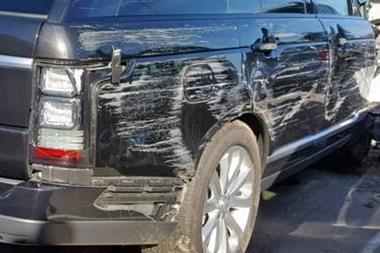In many categories art collection values are rising, and the biggest fear for insurers is under-insurance, not the credit crunch. Andrew Holt reports
Whizzkids in the City have been in the frame for making a bag of notes after investing heavily in contemporary and modern art. Over the past year the value of contemporary art rose by 55% and modern art by 44%, according to specialist insurer Hiscox, boosting the insurance that goes with this prestigious market.
But how long will this last? With the credit crunch hitting hard, the money swilling around to invest will no longer be there.
Charles Dupplin, Hiscox art expert, says that given how the modern market has evolved, there is likely to be some impact.
“There are two distinct types who are buying art at the moment – the hedge fund lads with their big bonuses, and the new rich, such as the Russians, who have become rich as their economies have opened up. With the credit crunch, at least one of these will be affected and possibly both. So it will have some impact on the art insurance market.”
But how much? Dupplin gives a serious warning. “The last time there was a collapse in the art market was the early 1990s. At this time you had larger Japanese corporates and Australians like Alan Bond investing heavily in art, and when the Japanese economy bubble burst they went bust as did the Australians, and the art market dived by 50%. That could happen again.”
A reduction in the value of a painting by 50% would impact on the art insurance market, as the insurance premium paid on paintings is usually a percentage – around 3% – of the painting’s value. If the value decreases so does the insurance.
“There will be a slow decline in the pricing of contemporary and modern art, but I don’t think there will be a crash
Annabel Fell-Clark, AXA Art
But Annabel Fell-Clark, chief executive of AXA Art UK, is more sanguine. “It is a case of wait-and-see at the moment. A lot of the top end buying art will not be affected by the credit crunch. It will be an interesting time over the next six to 12 months.
“There will be a slow decline in the pricing of contemporary and modern art, but I don’t think there will be a crash.
“The fine art insurance market will trail the pricing in the fine art market and may result in the revaluing of some pieces of art, which will mean lower premiums. But I don’t think the bubble has burst.”
She also says there is a prosperous art market internationally. “Art in China, with the indigenous people buying lots of art and a thriving art market in India have not been affected by the credit crunch.
“Although prices have gone quite high, I do not expect them to get any higher.”
Boom and bust in the 1980s
In the early 1990s art prices boomed when the Japanese bought
collections with borrowed money. When they defaulted on their loans the market imploded dramatically.
Annabel Fell-Clark, chief executive of AXA Arts, says the benefit of the current day art market is that art is not purchased on credit as in the past. “At the end of the 1980s and beginning of the 1990s people bought art on credit, based on the stock they owned. This all came crashing down when the Japanese economy did. This time people buying art are cash-rich and can afford it, so the credit connection isn’t there.â€
Furthermore, she notes that now most of AXA Arts’ clients include more than just modern art. Any collapse in one sector would not result in a dangerous domino effect. “I would say that no more than 25% of our clients are modern and contemporary collections, the rest have classical collections, historical and specialist art. Egyptian art, for example, is valued for its history and is unlikely to be affected by the current credit crunch.




































